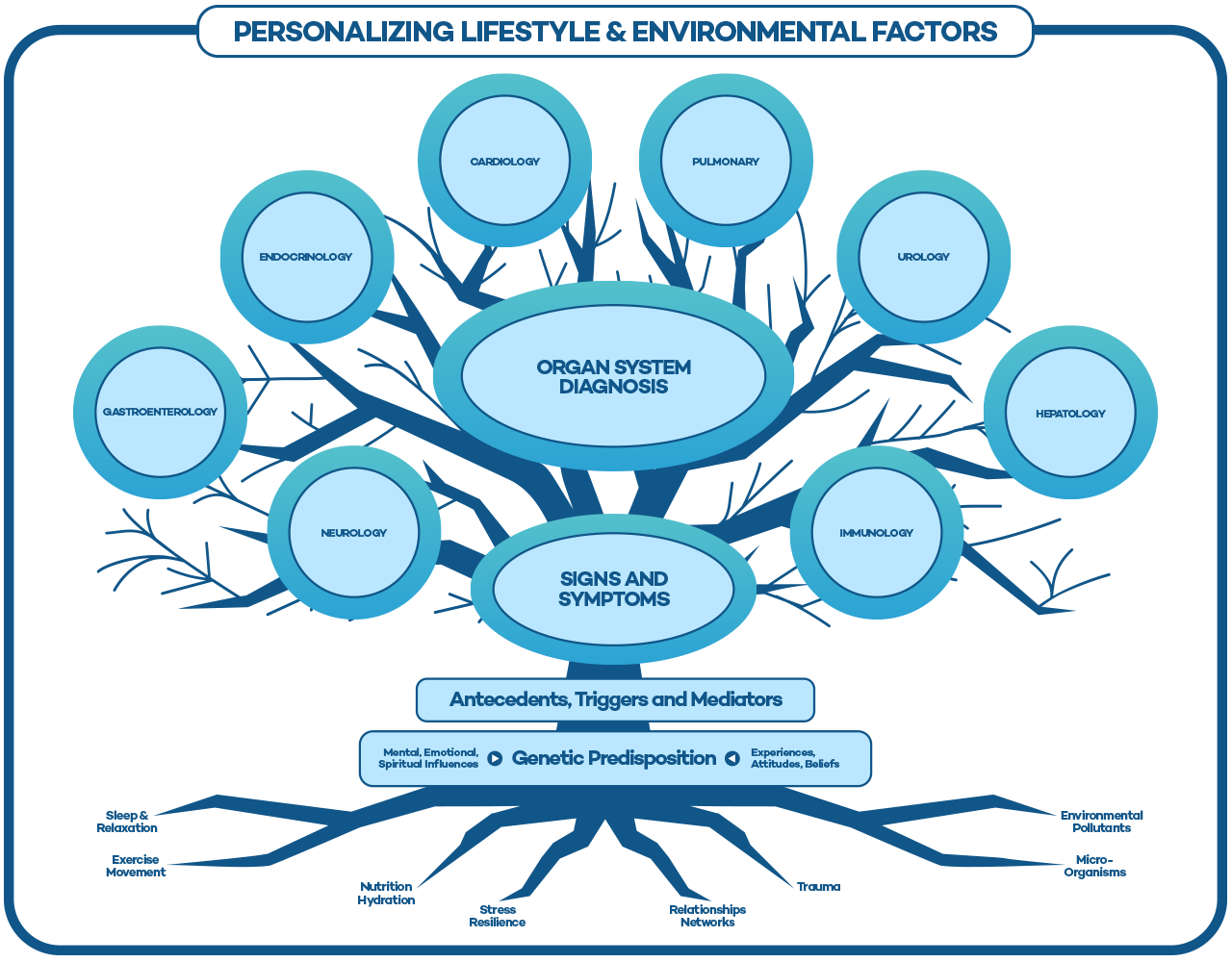Root Causes: What are they and why they matter.
In functional medicine the term root cause is used regularly when talking with patients. Some of you may be familiar with term, while others may be left scratching your head. Today, I want to explain what root causes are and why uncovering them are important for your optimal health. But first, let me discuss why root causes may be a foreign term to some and look at the current conventional healthcare (disease management) system.
In contrast to a functional medicine approach, the conventional healthcare system looks at symptoms, assigns an ICD-10 diagnosis code, and then a prescription. My first hand experience and the number of stories I’ve heard from my patients over the years confirms this approach. While many doctors and nurse practitioners are well intentioned, their training is based around pharmacotherapy, and they lack the foundation training in nutritional and lifestyle medicine.
On top of that, most appointment visits lack the appropriate time to truly hear a patients story and uncover their root causes. Over the years, a number of surveys have been conducted and reveal that an average doctors visit a patient receives is around 10-15 minute. A study performed by the University of Rochester found most patients have 3 reasons for a doctors visit, are interrupted in the first 18 seconds of telling their story, and never get the chance to finish. This shouldn’t come as a surprise since the healthcare system has been overrun by medical management corporations (that are publicly traded companies) and the most important factor is the bottomline for board members and share holders. This creates an environment for short visits, so more patients can be seen, equaling higher profit margins.
You might be thinking, seeing more patients a day is good because they get help more people, right? I would argue, not if the quality of those interactions are lacking and patients are left still wondering why they feel bad with no other option than a prescription. On the contrary to the above mentioned model, a functional medicine model provides adequate time for a patient to tell their whole story, allowing the doctor to uncover the root causes ( For example, I offer 60 minute appointments and have gone 75 minutes on complex cases).
Root causes can be seen as the individual driving factors of biochemical and physiological breakdowns. These breakdowns when left uncorrected, long enough, lead to clinical imbalances, symptoms, and organ system diagnosis. We can further sub-categorize our root causes into three groups:
- Antecedents: Think of these as congenital or developmental in nature. The most important congenital factor is sex. The most important developmental factor is age. Precipitating factors are critical antecedents that closely precede the development of chronic illness. They represent a boundary in time: before this event the person was healthy; since the event the person has become ill/symptomatic. Common precipitating events include a period of psychosocial distress, infection, exposure to environmental chemicals ( at home or work), nutritional deficiency due to diet. Precipitating events initiate a change in health status that can persist long after the exposure has been removed.
- Triggers: Anything that initiates an acute illness or the emergence of symptoms. Generally speaking triggers only provoke illness as long as the person is exposed to them (and possibly for a short while after). Common triggers include trauma (physical and mental-emotional), drugs, allergens, foods, toxins, and microbes.
- Mediators: Anything that produces symptoms, damage to tissues, or types of behavior associated with being sick. Common mediators can be categorized as biochemical (hormones), subatomic (EMFs), cognitive/emotional (fear or learned helplessness), and social culture (beliefs about the nature of illness).
As you can see, root causes can come in many forms, including but not limited to, psycho-social, trauma, diet & nutrition, genetic predisposition, xenobiotics, and microorganisms. These exposures and habits overtime breakdown the operating system (biochemistry and physiology) of the cells by creating chronic inflammation, oxidative stress, microbiome imbalance, and immune dysregulation, leading to a vicious cycle that is hard to break free from.
A common patient example is as follows: A patient comes in with fatigue and weight issues, was previously diagnosed with pre-diabetes and hypothyroid disease. They were told to eat better, exercise more, and were prescribed metformin and levothyroxine. Upon further evaluation from a functional medicine perspective, it is revealed a patient has thyroid antibodies (Hashimoto’s- number 1 cause of hypothyroid disease), a number of food sensitivities, leaky gut, and nutrient deficiencies. The patient also expressed when discussing her relationship with food, that her mother and grandmother showed love through baking desserts and giving sugary treats as rewards. These eating habits stayed with her into adulthood.
As you can see, root causes can be multi-factorial and layered. A common analogy used in the functional medicine model is pealing back the layers of an onion. While some root causes may be easier to uncover, some are deeply rooted, and if we don’t ask questions and let the patient tell their story, we may miss out on these important clues.
GENERAL ENQUIRIES
OFFICE HOURS
| Monday | Closed |
| Tuesday | 10am – 6pm |
| Wednesday | Closed |
| Thursday | 10am – 6pm |
| Friday | 10am – 1pm |
| Saturday | 10am – 1pm |
Social Media Outlets
Request Appointment
Please fill out the form below.



